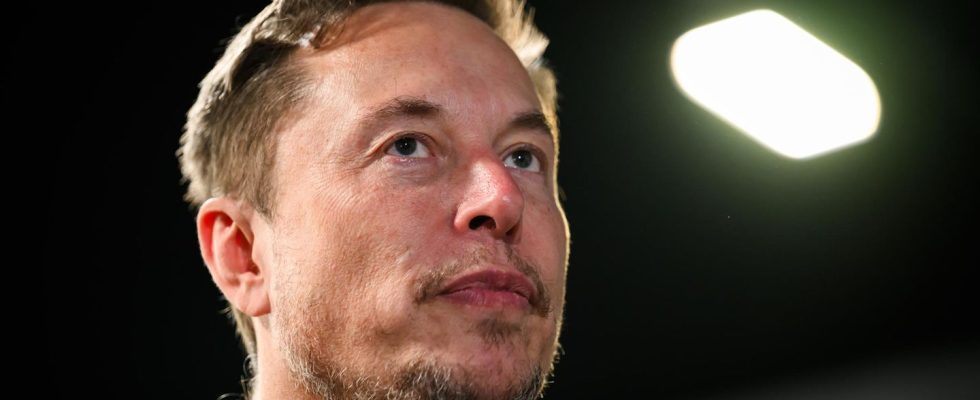“Optimus”
Elon Musk impresses with video of the Tesla robot – and has to row back after criticism
Elon Musk showed the progress with Tesla’s robot “Optimus” in a video
© Leon Neal/Getty Images
Tesla is working on a humanoid robot called “Optimus”. In a new clip he shows off his considerable skills, but gives many people the wrong impression.
The robot with its almost human-looking body slowly turns to a basket and grabs a bolt of material, which unfolds into a T-shirt. With very careful movements he places the shirt in front of him and gently grasps it with his mechanical hands. And begins to fold it carefully. The clip posted by Elon Musk on the short message service X apparently aroused such great expectations that even those who tend to exaggerate Musk quickly followed up with a clarification.
“Important note: ‘Optimus’ can’t do this on its own yet,” he explained in a supplementary post, just 23 minutes after the first clip. “Optimus” is the humanoid robot that his car company Tesla is currently developing. You can’t blame many users for getting the wrong impression from the short video. Even the high-tech YouTuber Marques Brownlee, better known as MKBHD, asked in disbelief whether it was a real video – or a computer animation.
Quick correction
In fact, doubts quickly arose as to whether the robot was doing the work itself. The delays and cables seen in the clip already indicate that “Optimus” is either running a predetermined program or is even being actively controlled by a human. Resourceful users want to have already proven this: At one moment in the clip, a hand equipped with sensors comes into the picture and performs exactly the same movement as the robot at that moment.
Although this control was probably not shown on purpose, Musk’s quick backtracking suggests that the clip was not necessarily intended to create false expectations. The video was primarily intended to demonstrate the robot’s impressive fine motor skills. As mechanical as the movements may seem, they are also precise, gentle and careful. And: Unlike in industry, they are not carried out by a robot that was developed solely for this purpose. But one that is modeled on the human body.
The machine could be used more flexibly in everyday life. With the help of AI, “Optimus” will learn to carry out everyday tasks. Then he could help around the house, clean up or cook. “In the future, it will be able to do this very safely independently and without an artificial environment (it will then not need a fixed table and a basket that only contains one shirt),” explains Musk, explaining the vision for the robot.

tendency to exaggerate
The fact that “Optimus” capabilities are still met with skepticism certainly has something to do with Musk’s habit of overselling products. When he first announced in 2021 that Tesla was working on an autonomous robot, he also invited an “Optimus” onto the stage. However, he was quickly revealed to be a human in a costume. At the first presentation of a working model, he explained that they were planning to produce market-ready models as early as next year. That was in October 2022. A year and a half later, “Optimus” can at least fold a T-shirt. Albeit slowly and with human help.
Sources: Elon Musk, The Verge, CNBC


